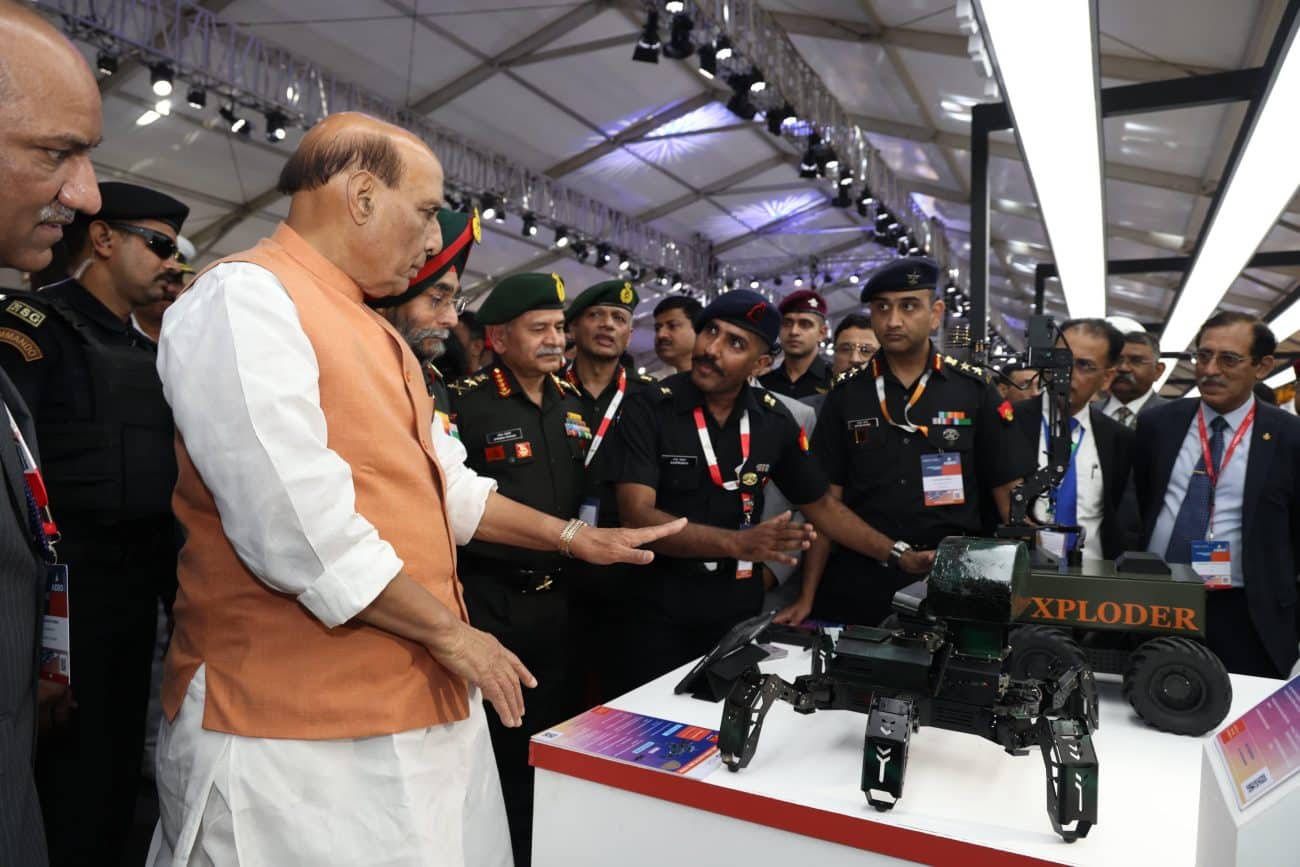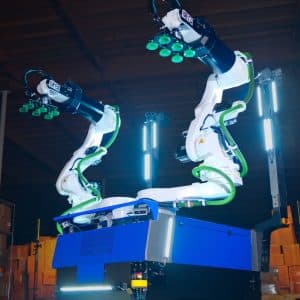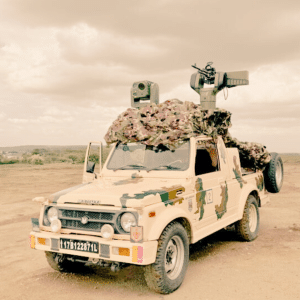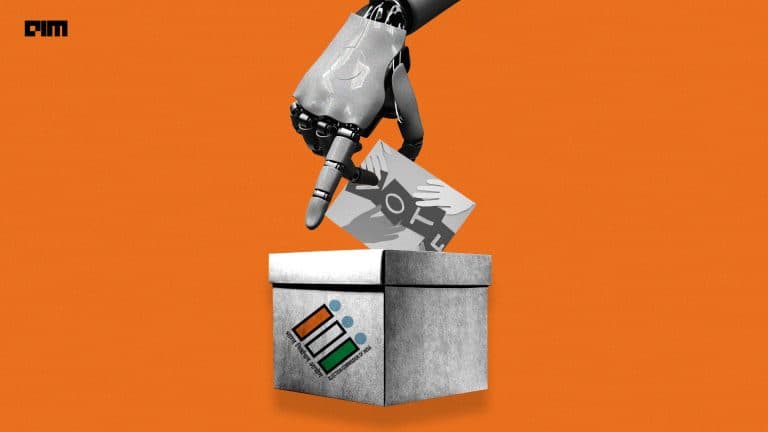The Indian Army has been rapidly embracing AI and autonomous systems to enhance national security while minimising human risks in combat. As modern warfare evolves, the military is prioritising indigenous innovations, ensuring self-reliance in defence technology.
This transformation aligns with India’s Aatmanirbhar Bharat initiative, which seeks to reduce dependence on foreign military imports.
India has been an early adopter of generative AI in defence. In 2018, the country established the Defence Artificial Intelligence Council (DAIC) to drive innovation.
Despite its efficiency, AI in combat remains a challenge. While AI enhances operations, human decision-making remains superior in unpredictable battle scenarios. For now, AI’s role is focused on predictive maintenance and manned-unmanned operations.
Meet Major Rajprasad
Major Rajprasad RS, a service innovation officer in the Indian Army Corps of Engineers from the Army Design Bureau and the 7 Engineer Regiment, is at the centre of this change. He has developed groundbreaking innovations that could redefine battlefield tactics.
He has demonstrated homegrown defence solutions by developing twelve cutting-edge military technologies, four of which have already been inducted into the Indian Army.
Speaking to AIM at the Aero India 2025 event in Yelahanka, Bengaluru, he described his innovations as fully operational battlefield solutions designed to increase combat effectiveness and reduce casualties.
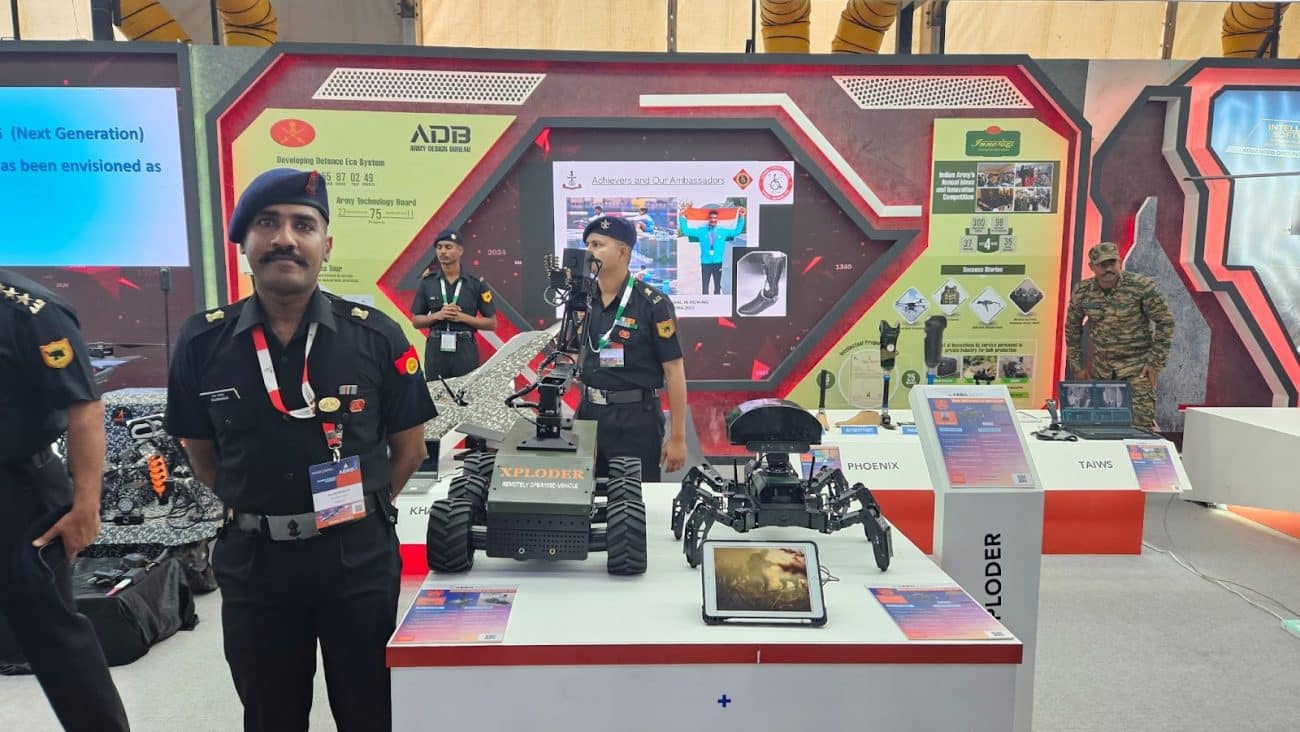
His latest innovations, Xploder and the Mobile Reactive Mine System (MRMS), were showcased to defence minister Rajnath Singh at the India Pavillion.
These revolutionary systems have also gathered national attention, even drawing interest from Prime Minister Narendra Modi and Indian Army chief general Upendra Dwivedi. Their induction into the Indian Army marks a significant shift in how India prepares for future conflicts.
Xploder: The AI-Powered Kamikaze
One of Major Rajprasad’s most promising innovations is Xploder, an unmanned ground vehicle (UGV) designed to enhance safety in counter-insurgency and counter-terrorism operations.
This six-wheeled, all-terrain vehicle is built for high-risk scenarios where human intervention can be fatal.
Xploder is capable of reconnaissance, explosive payload delivery, and (improvised explosive device) IED disposal. It can be remotely controlled to enter dangerous areas, identify threats, and neutralise them without risking human lives.
“In the aspect of room intervention in counter-terrorism operations, going inside each and every room and searching is difficult due to the risk of casualties because the militant can be anywhere, and it is a long-drawn process. So, this is used for reconnaissance in case a militant is found,” Major Rajprasad said.

Additionally, it can function as a kamikaze device programmed to detonate in enemy hideouts, making it a formidable weapon in urban warfare. The Indian Army is already considering mass procurement of Xploder, signifying its importance in modern military strategy.
MRMS: A Walking Mine Hunting Its Target
Traditional landmines are static and pressure-activated worldwide, which pose risks even to friendly forces. Moreover, they are used for defence purposes, mostly to harass, deny, and delay the enemy.
Major Rajprasad’s MRMS introduces a radical departure from conventional mine warfare. This advanced mine system mimics the mobility of a spider, actively searching for its target instead of waiting for them to step on it. He calls it a “reactive mine”.

The MRMS can be deployed via unmanned aerial vehicles (UAVs), drones or ground vehicles, allowing it to be dropped directly into enemy zones.
Once activated, it navigates towards enemy vehicles and detonates underneath them. This ability makes it a highly effective weapon for disabling armoured formations.
“For example, if a tank (a column of a squadron of tanks) is coming, you can just send it across in the path of the tank, under the belly of the tank, and it can blast. This is going to create a big defensive aspect in the enemy’s area of response (AOR).”
With Economic Explosives Limited (EEL) partnering for its production, MRMS is set to become a crucial part of India’s defence arsenal.
Upcoming Innovations
It doesn’t just stop here. Major Rajprasad is already working on new AI-driven combat systems to further modernise the Indian Army.
One of his key projects is an AI-enabled mine detection system that aims to reduce the risks associated with traditional demining methods. He is also developing Agniastra, a multi-target portable remote detonation system capable of neutralising targets from five to ten kilometres away. These innovations indicate that India is not just catching up with global military technology but setting new benchmarks for autonomous combat systems.
Moreover, the Indian Army also announced recently that it is set to retire 4,000 mules that have served in remote and mountainous regions and replace them with AI-powered robotic dogs.
New Kids on the Block.
— Brigadier Hardeep Singh Sohi,Shaurya Chakra (R) (@Hardisohi) January 9, 2025
Jai Hind 🇮🇳🫡 pic.twitter.com/PyNlzNmpDp
As displayed in the parade for 77th Army Day in Pune at the Southern Command Investiture Ceremony 2025, India is the second nation to feature this technology after China.
These robotic dogs are designed to replace mules in high-altitude warfare. These robotic quadrupeds can navigate challenging terrain while carrying payloads equipped with thermal cameras and 360-degree sensors.
They can carry payloads of up to 12–15 kilograms and operate in extreme temperatures ranging from -40 to 55 degrees Celsius.
Globally, militaries in the US, China, and Russia are investing in robotic warfare, and India is following suit. The transition to robotic logistics reflects the growing importance of automation and AI in military operations.
What’s Next?
At the end of last year, the Indian Army collaborated with BEL to launch the Indian Army AI Incubation Centre (IAAIIC) in Bengaluru. Army chief Dwivedi virtually led the launch, underscoring the Army’s commitment to AI for operational excellence.
In just six months, systems like Vidyut Rakshak, Agniastra, and Xploder have moved from development to deployment, reinforcing India’s commitment to self-reliance. His previous development, the wireless electronic detonation system, has already been integrated, proving the Army’s commitment to rapidly absorbing indigenous solutions.
For the first time, the Transfer of Technology (ToT) has also been transferred to private defence manufacturers through the Army Design Bureau, fostering large-scale production and strengthening India’s defence ecosystem.
Recognised by top leadership, this milestone reflects the Army’s dedication to technological evolution. As the ‘Year of Technology Absorption’ progresses, this seamless transition from innovation to induction is setting a new standard for India’s defence modernisation.
With the direction of displays this year, the coming years could see the mass deployment of smart, unmanned combat systems, from autonomous reconnaissance vehicles to AI-driven missile defence networks. By placing a strong emphasis on AI, automation, and indigenous production, the Indian Army is ensuring that it remains prepared for future conflicts.


